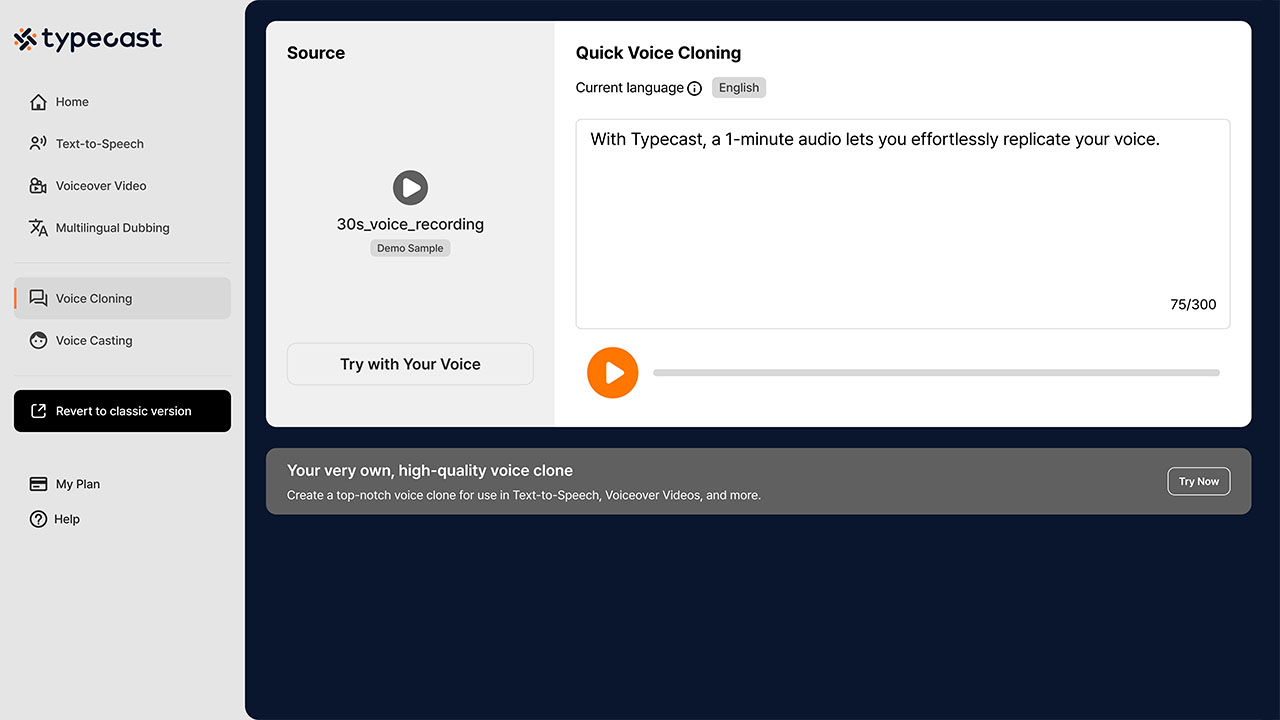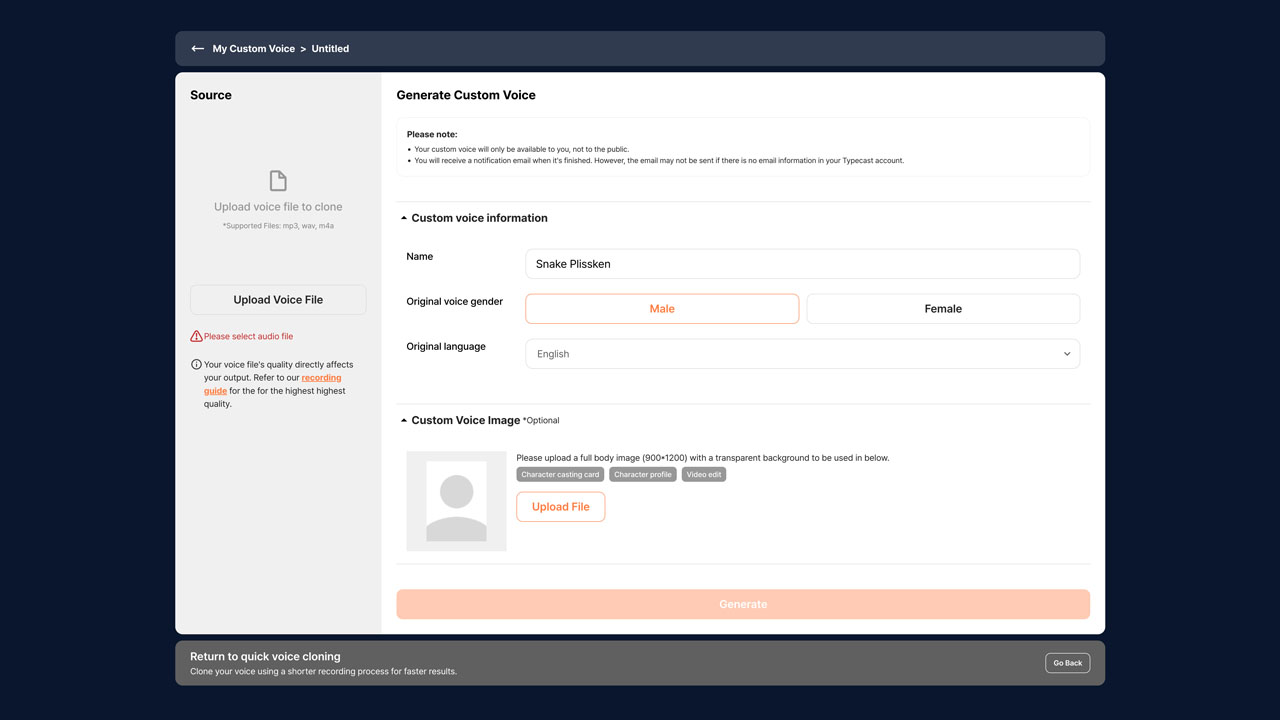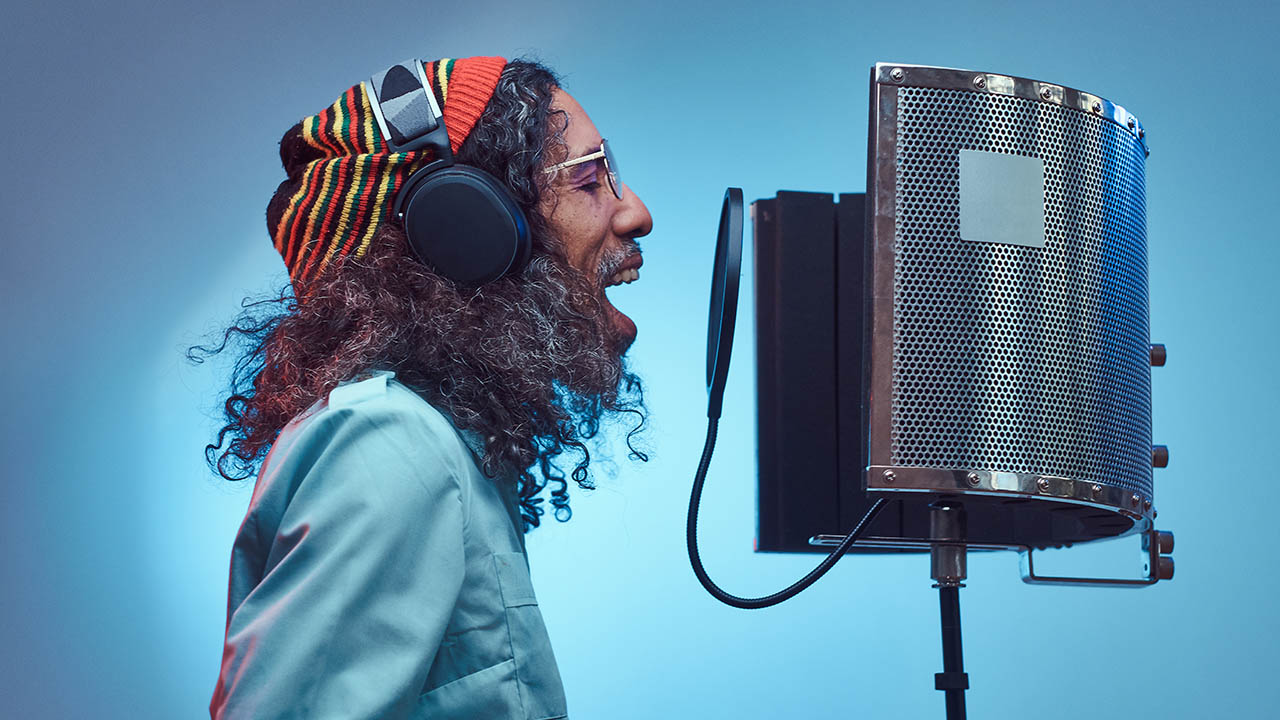Have you heard that letting an opportunity pass you by is not a good idea? Now is the time to grab the opportunity by the collar and take advantage of custom text-to-speech voices. With a few steps, you can create natural-sounding speech AI voice over actors for your needs. The current trends demand natural-sounding voices that represent the brand. So, instead of resisting change, why not use it to your advantage?
How can creators find reliable custom text-to-speech solutions? Creating custom voices is possible through deep neural networks. With innovative language processing techniques, anyone can create a unique voice for content creation and business purposes.
TTS engines are trained on neural networks to produce natural-sounding voices.
Creating a unique voice for your business or content creation doesn’t have to be stressful. With the help of professionals and accessible technology, custom text-to-speech voices are achievable. So let’s dive into the world of custom text-to-speech software to understand how to harness its potential.
Finding custom text-to-speech solutions vs. hiring professional voice actors
Most businesses understand the importance of finding custom text-to-speech solutions for their content. But do you need to hire professional voice actors?
Well, not always.
Anyone can use a custom text-to-speech engine for content creation, marketing, audiobooks, and advertisement campaigns. Again, hiring professional voice actors is not always necessary, as AI voice-over actors can be trained using deep neural networks.
You can train these custom text-to-speech engines on deep neural networks to produce natural-sounding voices. However, if you want to create a unique voice for your content, utilizing platforms with speech synthesis capabilities is the way to go.
Speech synthesis and how does it relate to TTS and speech technology?

Speech synthesis is a computer-generated simulation of human speech. It’s a speech tool commonly used to convert text into audio and can be found in voice-enabled services, mobile apps, and assistive technology devices for visually impaired individuals.
The synthesized speech takes text as input and produces audio files as output.
The technology has been around for a few decades, but with the help of deep neural networks, it has advanced quickly, bringing a broad range of capabilities and use cases.
Nowadays, speech synthesis can learn from human recordings and generate a better-sounding audio version of the original speech.
This makes it possible to produce natural-sounding voices that anyone can use for content creation, audio voice overs for a marketing campaign, or even for audiobooks for creators or educators.
Text-to-speech technology: Industry requirements
We already know that TTS technology converts written text into natural-sounding speech. Still, this technology has grown substantially and has many applications, no matter your profession.
With the help of AI-powered voice synthesis technology, businesses can create personalized experiences that are tailored to their customers. But TTS tools must be of a certain quality to include personalized customer interactions in content.
Natural sounding voices vs. natural sounding speech: Are they the same?
There are many TTS tools out there, all with different features, and they are not all the same, nor can they do the same things. A similar situation applies to natural-sounding voices vs. natural-sounding speech. While they are related, they are not the same.
Natural-sounding voices are generated through text-to-speech technology and sound similar to a human voice, similar to how your native language sounds to you.
Natural-sounding speech refers to the TTS software’s ability to generate spoken words fluently, just like a human would speak. Creators can achieve natural-sounding speech through AI-powered voice synthesis technology and natural language processing.
Importing and exporting capabilities

Whether you’re an individual creator or a business, the main advantage of using TTS technology is its flexibility. The ability to import and export audio files is an essential feature that no TTS tool should lack.
With this capability, creators can easily share their content with others and get feedback and advice. On the other hand, businesses can share their content with potential customers to capture their attention.
The ability to change the speech quality
Another essential feature of TTS tools is adjusting and customizing speech quality. No, we’re not talking about the AI voices – we’re talking about changing the speed of speech, volume level, and more.
This is an excellent feature for creators who want to personalize and make their content unique. It also allows businesses to create specific tone and style audio presentations.
Perhaps, more importantly, a TTS tool needs adjustable settings that change whether a voice is professional, casual, or something else. This audio element is crucial for businesses that need content with the right tone that feels authentic to their brand.
Of course, branding is vital for creators too, but they may not need to worry as much about professionalism and formality in their content.
Custom voice solutions for creators and enterprises

Businesses and creators have different needs when it comes to content. For businesses, having a consistent and professional voice is a requirement.
They need an audio voice over that stands out from the competition and conveys their message in a clear and compelling way. Creators, conversely, can break out of their shells and experiment with different free text-to-speech voices to find a suitable one.
When creating unique voices, businesses and creators can benefit from custom voice solutions. These tailor-made services provide companies and creators with tools to develop customized voices for their brands.
Custom voice solutions take into account a variety of factors, from accent to language to emotion.
These tools also allow creators and businesses to fine-tune their TTS to get the perfect sound for their content. If you’re a content creator who makes fictional audiobooks, you will need a voice that reflects the tone and character of your story.
While we’ve discussed a limited range of uses for custom text-to-speech tools, creativity, and experimentation are the only limits.
Top 3 use cases for custom text-to-speech technology
Businesses and creators can create unique and natural-sounding text to speech for their written content with custom voice solutions.
Here are the top 3 use cases for custom TTS technology:
- Content creation – Creators can use custom voices to create content for audiobooks, TikTok marketing clips, interactive stories, and YouTube videos, or you can be an online narrator in a digital fiction series.
- Brand marketing – Businesses can use real voice solutions to create a unique and memorable brand identity for their web pages.
- AI chatbots – Custom TTS can also be used in customer service applications, such as chatbots on your mobile device, to give your business a more human touch. Custom text-to-speech voice options makes it easy to stand out from the competition because no one has what you have.
Who should use custom text-to-speech tools?

Saying that custom TTS tools are perfect for content creators is an understatement. Those who want to make their work stand out will learn they can do so much with just a little.
Custom voice solutions are also excellent for businesses creating professional-looking audio presentations. With custom voices, companies can easily adjust the tone and style of their audio presentations to reflect the brand’s message authentically.
Custom text-to-speech solutions is the perfect choice for any creator or business who wants to make authentic content that isn’t a rehash or a carbon copy of someone else’s work.
So whether you’re creating content for the Internet of Voice or just trying to stand out from your competition, custom. The takeaway is that custom TTS tools give creators and businesses a competitive edge when creating their content.
How do I get custom text-to-speech voices for my content?

Now to the important part, well, most important part: How do I get custom text-to-speech voices for my content? We’re glad you asked, and the answer is quite simple.
Typecast’s Voice Cloning tool.
Our revolutionary new platform allows users to create a custom voice over actor in minutes. If you’ve heard of our service or use our library of high-quality voices, you know that we offer nearly 130+ AI voices that can speak in different accents and multiple languages.
You can select from pre-trained models and voice actors and use them to create custom audio presentations, interactive stories, voice over scripts, and endless content.
Now, with Typecast’s Voice Cloning, you can use our voice cloning system, your voice recordings, or both to generate a custom voice. Our easy-to-use platform offers user-friendly tools to create the perfect voice for your creative content.
You can try out a simple version of our Voice Cloning tool for free, you just need to sign up, and upload a few seconds of audio you want to clone.
Get more advanced custom voice solutions with a Typecast Pro Plan

TTS engines are the latest tool for content creators and businesses looking to set themselves apart. However, while the technology has significantly improved, offering pre-made or library voices isn’t enough.
With Typecast’s Pro plan, users can build a personal library of their own custom voiceovers. These custom text-to-speech voices allow you to can create unique and memorable content that will reach more customers and make more of an impact.
Start creating your custom voice by inputing all their essential information like name, gender, and language.
Following that, you can also upload any custom voice’s images you may have and upload the audio playback of your voice file. When uploading your audio file, include something that follows our voice data specs. Once you upload the file, the learning process will begin.
Before you know it, you’ll have something no one else will.









